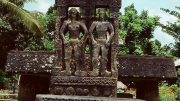Having spent plenty of time observing corruption first-hand in Indonesia, I’ve recently started to read more about what the boffins say. By boffins, I mean institutions such as the World Bank who write prescriptions for countries sick with corruption, and the academics who analyse such prescriptions and point out why they don’t cure the patient.
In the latter group is Roberto Laver. He points out that the corruption medics have essentially confined themselves to prescribing two things: institutional reform and “social accountability” — more citizen oversight of the bureaucracy. Mirroring real medics, they tend to overlook the role that culture plays in entrenching corruption. I think Laver’s might himself do well to think more about the role that culture plays in defining corruption — maybe the medics are diagnosing and pathologising forms of patronage that are not actually that harmful socially. But I agree with most of his points.
It’s certainly fashionable to believe that more engaged citizens will undermine corruption by demanding better services from their politicians and by tolerating less in the way of corruption. “Social Accountability Works!” screams a recent paper from the World Bank. Social media, it’s commonly held, are the key to this new activism. Certainly, Twitter and Facebook are great organisational tools. But might they also UNDERMINE activism? Hip young urbanites vent on Twitter, sometimes even go so far as to make YouTube videos in support of the cause. Then they put it out there, and go off for a frapuccino. Take this protest by Eka Gustiwana against the law rescinding the right to elect district heads directly in Indonesia:
Many Clicks But Little Sticks, it’s not a substitute for real action, for the deep political affinities and commitment that are built while organising mass movements face to face. The latter involved day to day exchange of ideas and development of common platforms that remains at the heart of real political change (for an interesting exploration of this idea, keep an eye out for Zeynep Tufekci’s talk at TEDGLobal, which I hope will be posted soon).
Worse that thinking you’ve done your bit by sending a tweet, is knowing you’re actively doing damage by sending a tweet. Indonesian police yesterday arrested a man they believe to be a serial malicious Tweeter. While the headline of the story describes him as an anti-corruption vigilante, the texts suggests that it’s just as likely that he’s being paid to run smear-campaigns on social media, or worse still, blackmailing people who want him to stop churning out damaging or even defamatory tweets.
In other words, social media can become a platform for mud-slinging and the perpetuation of corruption just as easily as they can be used to spotlight graft and prompt formal investigation. Some of these campaigns will have real-world consequences, others will be drowned out by more interesting cyber-chatter. For Lim, successful social activism depends on the interaction between the online and offline worlds; I’m guessing that her analysis of what makes a campaign take off is as true for anti-corruption vigilantes as it is for shysters and blackmail-artists.




